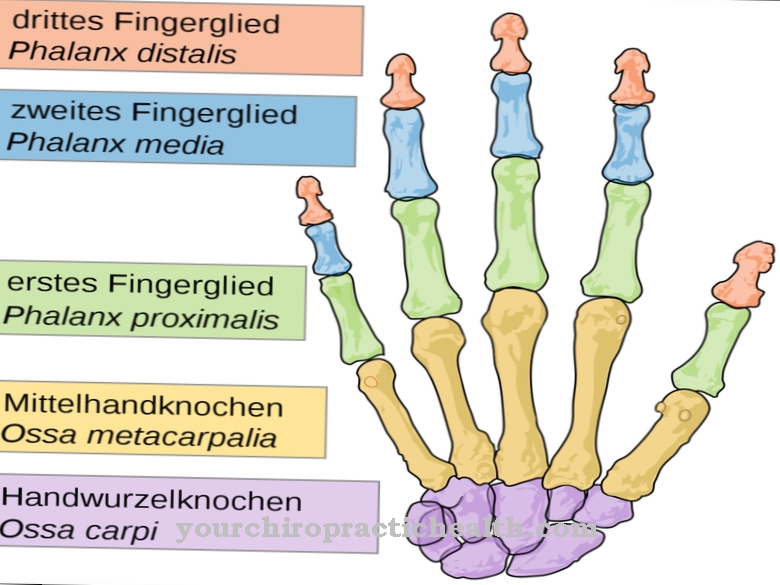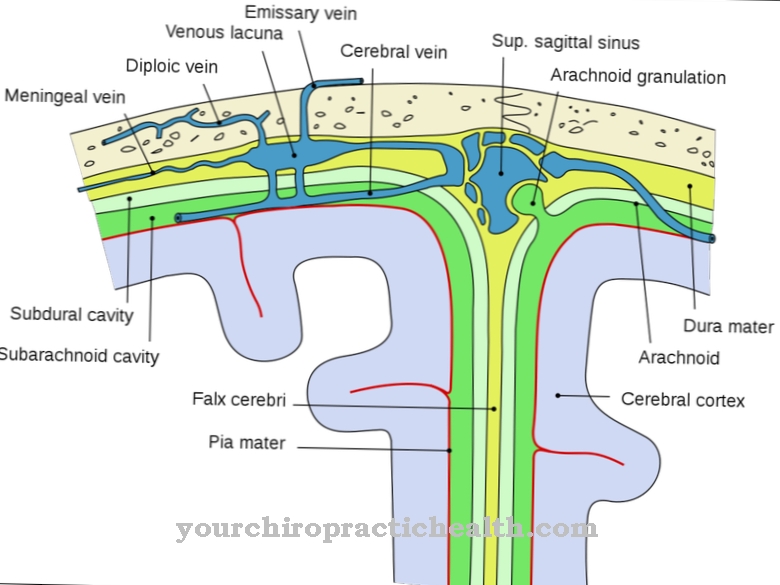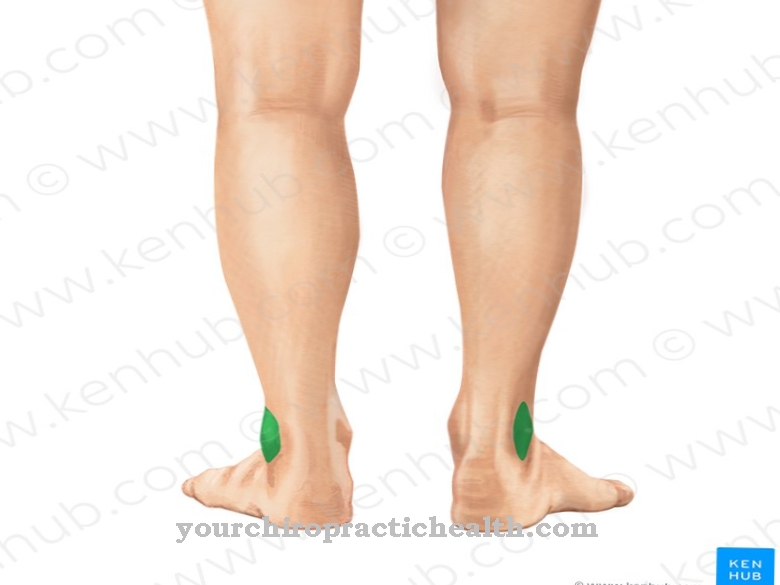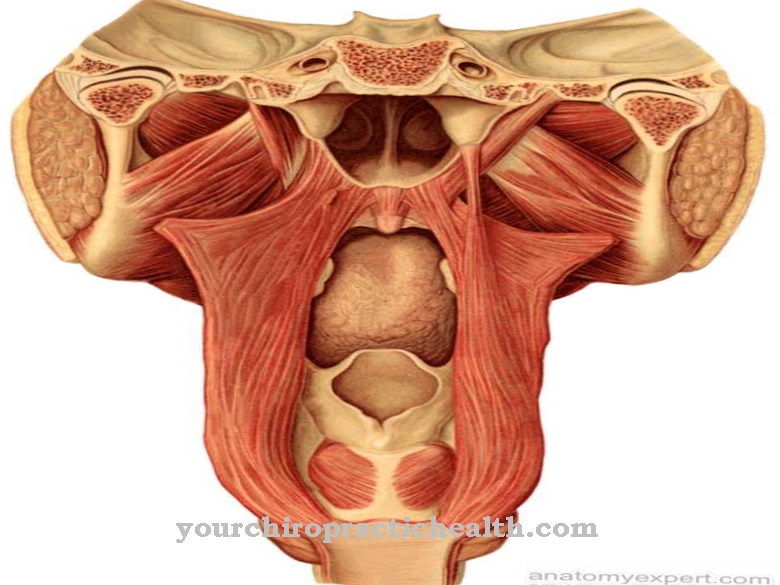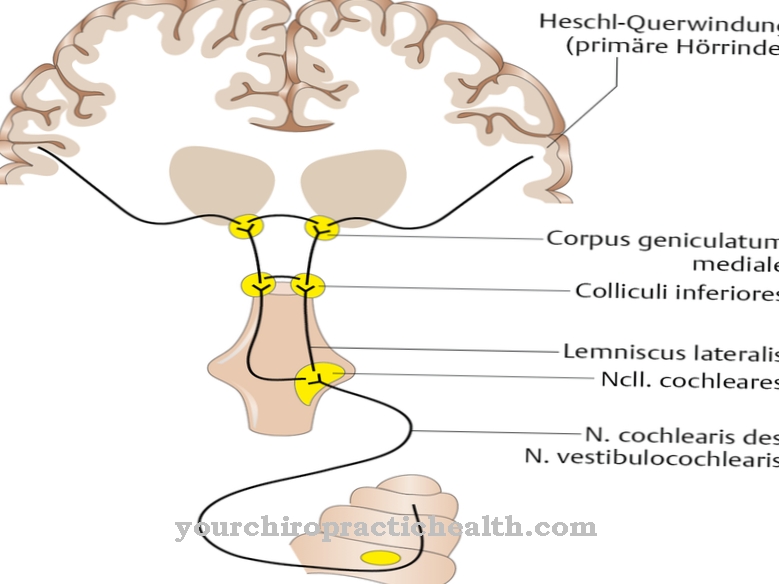Of the visual cortex (Visual cortex) is the part of the cerebral cortex that enables vision. It is located in the occipital lobe of the brain. Failures in the visual cortex lead to disturbances in image processing and thus to visual field failures.
What is the visual cortex?
The visual cortex represents the area of the cerebral cortex where the image processing takes place from recorded visual stimuli in the eye to the complex representation of what is seen. It takes up most of the occipital lobe of the brain. In Korbinian Brodmann's brain map, it corresponds to brain areas 17, 18 and 19.
The visual cortex is further divided into the primary visual cortex (V1) and the secondary and tertiary visual cortex. In primates, including humans, the cell density of the visual cortex is very high. However, their thickness is very small and is only 1.5 to 2 millimeters in humans. Area 17 represents the primary visual cortex and directly represents the mutual half of the visual field. In addition, it has a retinotope structure. This means that the points shown on the retina are also arranged in the same way in the visual cortex. Since area 17 (primary visual cortex) has a streaky structure, it is also called area striata.
Anatomy & structure
As already mentioned, the visual cortex is divided into the primary, secondary and tertiary visual cortex. The visual stimuli transmitted from the retina via the thalamus are first recorded in the primary visual cortex. The primary visual cortex consists of six cell layers. The first two layers contain so-called magno cells. These are large cells that are responsible for the perception of movement.
The next four layers are represented by Parvo cells. The Parvo cells are small and control the perception of the objects through color and structure representation. The ganglion cells in the primary cortex are arranged like the receptors in the retina. The cells in the primary cortex, which are supposed to represent the fovea, are most represented in number. The fovea forms the area of sharpest vision in the retina and therefore also contains most of the optical receptors. In addition to the stratification, there is also a division into columns. There are orientation columns, dominance columns and hypercolumns. The cells downstream in each column are arranged in the same way as the points shown in the retina. Each orientation column only reacts to a line at a special point in the retina.
The system of lines is captured as an image of the environment in contours. A dominance column is made up of several orientation columns with differently aligned lines from the same point on the retina. In addition, the dominance pillars consist of orientation pillars and so-called blobs. Blobs represent columns that respond to colors. The hypercolumns in turn consist of the dominant columns of the same field of vision from both eyes. Thus, they are made up of two dominant pillars (one per eye). The image information is forwarded from the primary visual cortex via two different paths for further processing to the secondary and primary visual cortex.
Function & tasks
The visual cortex has the task of absorbing optical stimuli and processing them step by step so that the environment is depicted. After receiving the stimulus, the information is broken down, analyzed, abstracted and passed on in an orderly form to the next processing stage.
While the processes in the primary visual cortex are largely known, further information processing is no longer so easy to understand. The stimulus is transmitted from the primary visual cortex via a dorsal parietal and a ventral temporal path. The parietal processing current is used to perceive movement and position and is also known as the Wo current. The temporal current is used to recognize objects through perception of color, pattern and shape.
Accordingly, it is also known as the what stream. In the further course of image processing, the links between image display, reaction and behavior become more and more complex. Not only the current image serves as the basis for the action, but also the images stored in the memory. Similar processes take place in visual presentations as in image processing.
You can find your medication here
➔ Medicines for visual disturbances and eye complaintsDiseases
Lesions in the visual cortex lead to the disruption of visual perception. The deficiency symptoms depend on which areas of the visual cortex fail. When the primary visual cortex is damaged, visual field defects occur. In the worst case scenario, complete blindness can occur. This form of blindness is also known as cortical blindness.
The function of the visual pathway is still completely intact, but the image information is no longer passed on. The patient still unconsciously reacts to visual stimuli, although he can no longer see anything. However, he is still able to grab and name objects when prompted to do so. This condition is also known colloquially as blind vision. If the secondary or tertiary visual cortex fails, blindness does not occur. The picture is still fully perceived. However, the reference to the people or objects is sometimes lost here.
Since the complex relationships between visual perception and recognition of the objects are controlled in this image processing phase, the people or objects can no longer be recognized in some cases. This is an agnosia. Hallucinations can also occur. When the secondary or tertiary visual cortex is disturbed, synesthesia often occurs, whereby different sensory perceptions are linked to form a subjective sensation.

